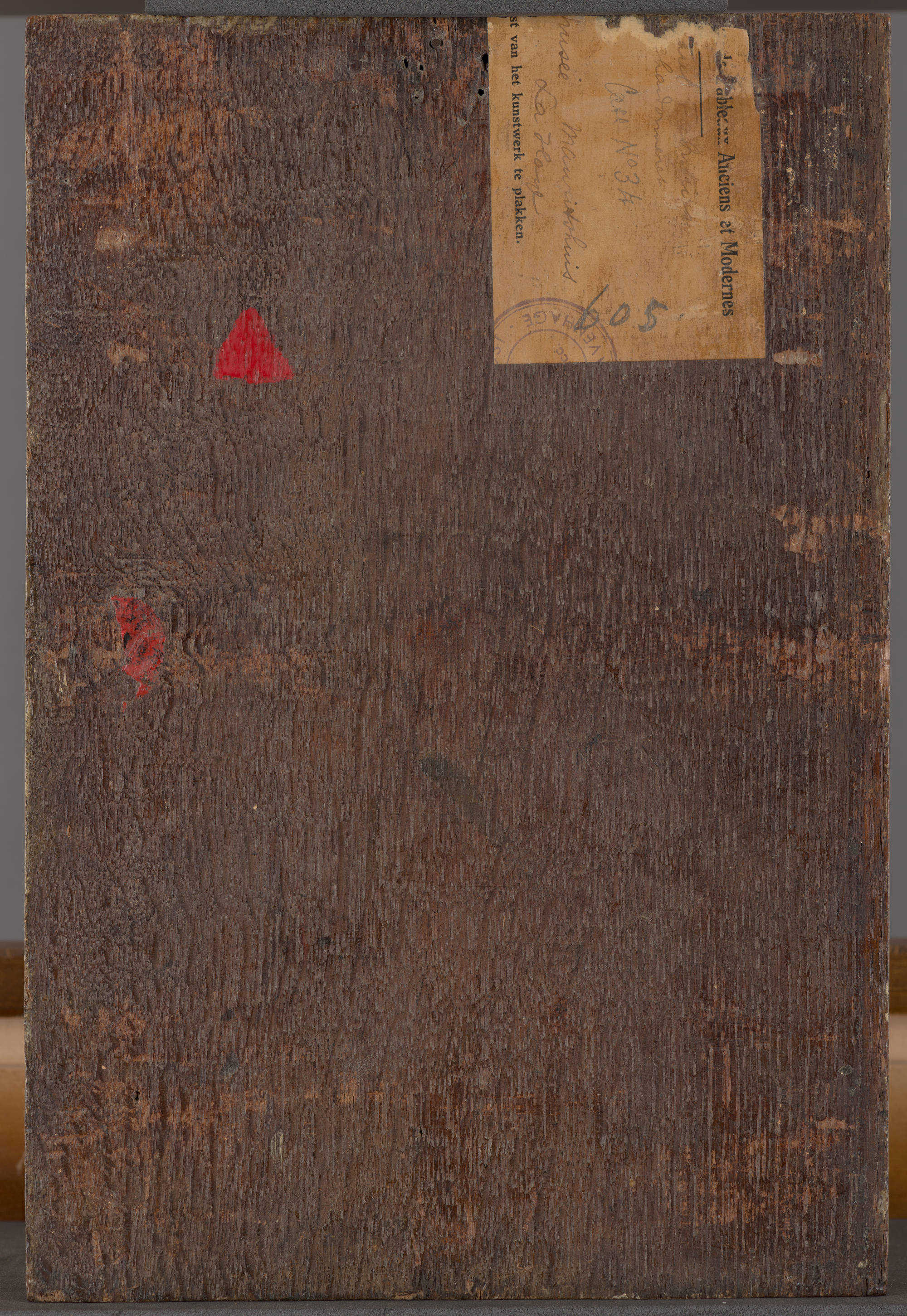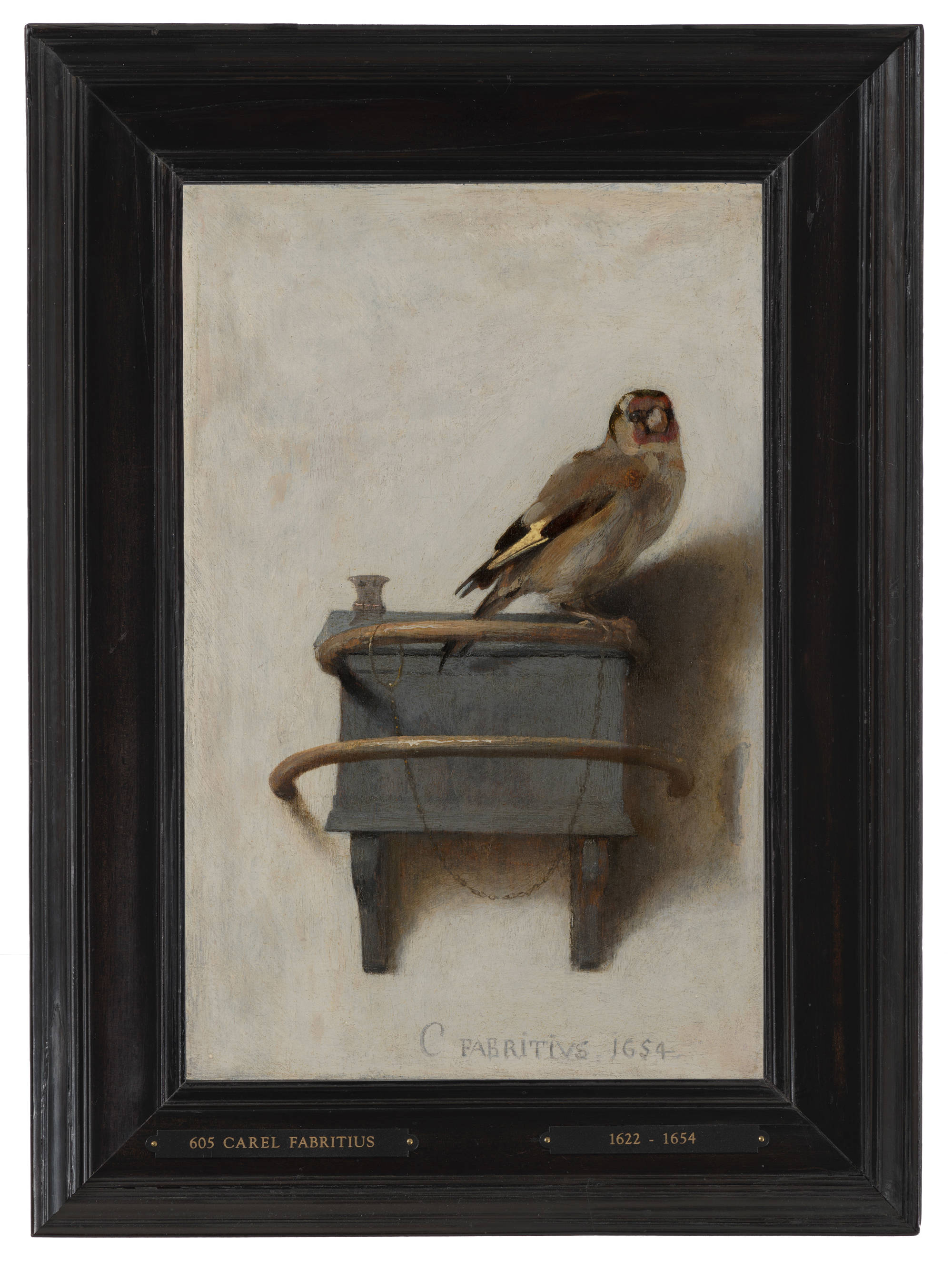The bird chained to its feeding-box, where it perches against a whitewashed wall, is a European goldfinch (Carduelis carduelis). It owes its Dutch nickname, puttertje (‘water-drawer’), to its adroitness in drawing water from a bowl or glass using a thimble-sized bucket on a chain. It can also open its feeding-box with its beak. Goldfinches were popular pets in the seventeenth century because of their ability to learn these tricks. They generally had feeding-boxes like the one depicted here, attached to a long wall-support, above which there was often another box, sometimes in the form of a little house with a step-gable. Attached to the bottom of the support was a wooden platform with a circular hole through which the little bucket could be lowered.
The goldfinch has been painted vigorously, in brushstrokes that can be clearly distinguished from one another. The paint has been applied in varying thicknesses, and in some places in thick impasto. The little yellow feather in the black wing provides a striking colour accent. The red paint in the bird’s head, which has become somewhat discoloured over time, must also have originally added a far more expressive colour accent. The scene is painted on a fairly thick small panel, which has been sawn from a far larger one. This has prompted various speculations regarding the painting’s original function. It may have been part of a cage as described above, for instance, but with a painted instead of a real bird. In this case it was intended as a trompe l’oeil, with the combination of two-dimensional and three-dimensional elements serving to enhance the illusion. Another possibility is that it functioned as a little door to a wall niche. This theory derives credence from the fact that the background of the painting creates the impression of a plastered wall; what is more, the vantage point indicates that the image should be viewed from below. Yet another idea is that it may have served as a little door to a cupboard containing another painting, which was enclosed to protect it from dust, dirt and damage. Protective cupboards of this kind were fairly common.
Carel Fabritius was apprenticed to Rembrandt in Amsterdam from about 1641 to 1643. His extant oeuvre is small, comprising no more than twelve paintings. The early works are fairly Rembrandtesque, while the later ones, made in Delft between 1650 and 1654, are far lighter. Fabritius is often described as the artist who heralded the zenith of the Delft school of painting in the 1650s, which emphasised the meticulous observation of perspective, light, colour and atmospheric effects. He has even been called the precursor of Vermeer. In fact artistic dialogue would seem a more accurate description than unidirectional influence. In 1654, the year in which Fabritius produced The Goldfinch, he died prematurely in the massive explosion of a gunpowder storehouse that laid waste much of Delft.
(this is a reworked version of a text published in in: P. van der Ploeg, Q. Buvelot, Royal Picture Gallery Mauritshuis: A princely collection, The Hague 2005)









